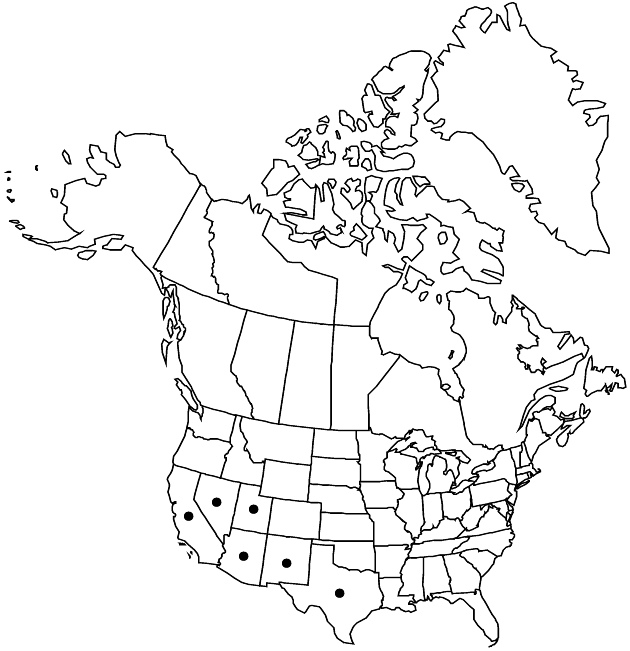Difference between revisions of "Bebbia juncea var. aspera"
Bull. Calif. Acad. Sci. 1: 180. 1885.
Illustrated
Synonyms: Bebbia aspera (Greene) A. Nelson
Treatment appears in FNA Volume 21. Treatment on page 177.
imported>Volume Importer |
imported>Volume Importer |
||
| Line 53: | Line 53: | ||
|publication year=1885 | |publication year=1885 | ||
|special status=Illustrated | |special status=Illustrated | ||
| − | |source xml=https:// | + | |source xml=https://bitbucket.org/aafc-mbb/fna-data-curation/src/2e0870ddd59836b60bcf96646a41e87ea5a5943a/coarse_grained_fna_xml/V19-20-21/V21_434.xml |
|tribe=Asteraceae tribe Heliantheae | |tribe=Asteraceae tribe Heliantheae | ||
|subtribe=Asteraceae (tribe Heliantheae) subtribe Galinsoginae | |subtribe=Asteraceae (tribe Heliantheae) subtribe Galinsoginae | ||
Latest revision as of 20:12, 5 November 2020
Leaf blades 5–65 × 1–6(–12) mm, faces rough hairy to glabrate (hairs antrorse). Phyllaries usually lanceolate, lance-linear, or lance-elliptic, sometimes narrowly ovate, 0.9–7.5 × 0.5–2 mm, outer usually less than 1.6 mm wide, apices acute to blunt. Corollas 4.5–9 mm. Pappi 5–8 mm. 2n = 18.
Phenology: Flowering mostly year round.
Habitat: Rocky and sandy soils, dry hillsides, slopes, desert washes, canyons
Elevation: 0–1300 m
Distribution

Ariz., Calif., Nev., N.Mex., Tex., Utah, Mexico (Baja California, Sinaloa, Sonora).
Discussion
Selected References
None.
Lower Taxa
None.
